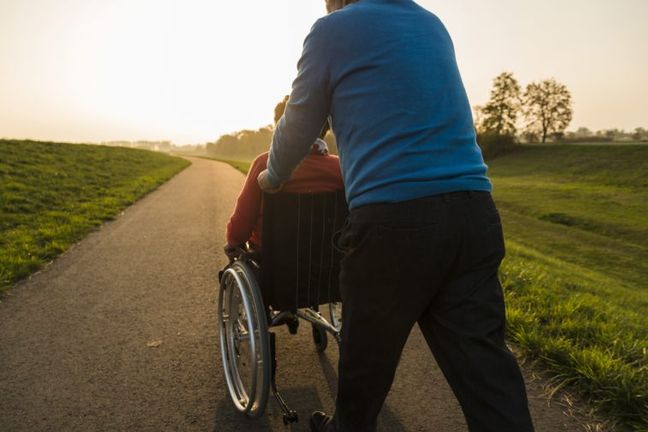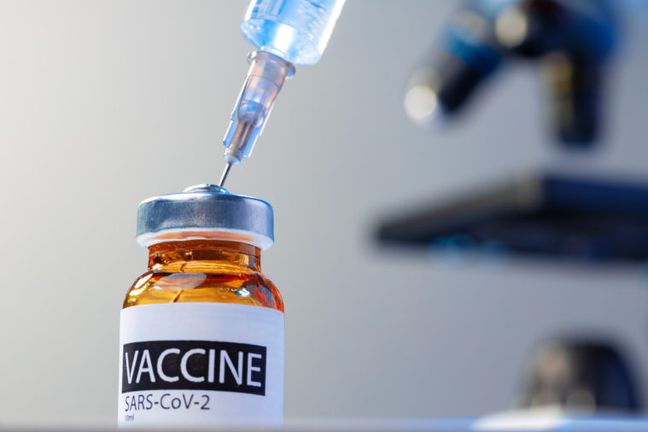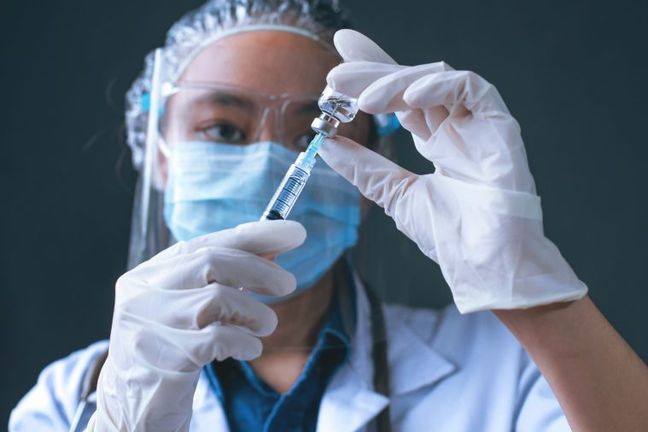On April 8, 2019, Colorado’s Governor, Jared Solis, signed Senate Bill 19-109 into law, increasing the caps on damages.[i] The law represents the first increase in damage caps in twelve years and will go into effect on January 1, 2020.
Which Caps are Increasing?
The new law will raise the caps on noneconomic damages, derivative noneconomic damages, wrongful death, solatium, and dram shop/social host statutes for inflation.[ii]
The Current Caps
The Colorado Secretary of State is responsible for computing and certifying the effect of inflation on the statutory caps, utilizing the “consumer price index for Denver-Boulder, all items, all urban consumers.”[iii] The present caps for all claims for relief that accrue on and after January 1, 2008 are as follows:
For noneconomic damages,[iv] the current adjusted limitation is $468,010, which may be increased by the court upon clear and convincing evidence to a maximum of $936,030.[v] “Noneconomic loss or injury” means nonpecuniary harm for which damages are recoverable by the person suffering the direct or primary loss or injury, including pain and suffering, inconvenience, emotional stress, and impairment of the quality of life.[vi]
For derivative noneconomic damages, the adjusted current limitation is $468,010.[vii] “Derivative noneconomic loss or injury” means nonpecuniary harm or emotional stress to persons other than the person suffering the direct or primary loss or injury.[viii]
For wrongful death actions,[ix] the current adjusted limitation is $436,070.[x] In wrongful death actions, noneconomic losses include past and future “grief, loss of companionship, impairment of the quality of life, inconvenience, pain and suffering, and emotional stress.”[xi]
For solatium damages in wrongful death claims, the current adjusted limitation is $87,210.[xii] Persons entitled to sue under the wrongful death statute,[xiii] may elect in writing to sue for and recover a solatium.[xiv] The solatium amount is in addition to economic damages and “to reasonable funeral, burial, interment, or cremation expenses.”[xv] However, the solatium amount “is in lieu of noneconomic damages recoverable under section 13-21-203 and shall be awarded upon a finding or admission of the defendant’s liability for the wrongful death.”[xvi]
For Dram Shop Act claims, the current adjusted limitation is $280,810.[xvii] The Colorado Dram Shop Act serves as a plaintiff’s sole remedy against a liquor licensee for injuries resulting from the service of alcoholic beverages when “it is proven that the licensee willfully and knowingly sold or served any alcohol beverage to the person who was under the age of twenty-one years or who was visibly intoxicated and the civil action is commenced within one year after the sale or service.[xviii]
New Cap Amounts for Actions Commenced On and After January 1, 2020
Although the Colorado Secretary of State has not yet calculated and certified the new caps for claims filed on and after January 1, 2020, so it is not yet known what the actual limitation will be, we can estimate the new cap amounts for actions commenced on and after January 1, 2020 may be as follows:
For noneconomic and derivative noneconomic damages, approximately $584,210.
For wrongful death actions, approximately $532,005.
For solatium, approximately $108,840.
For Dram Shop Act claims, approximately $350,000.
Other Important Portions of Bill 19-109, as Signed into Law
The last two scheduled adjustments of the damages caps applicable to the above-described statutes previously occurred on January 1, 1998 and January 1, 2008, respectively. In order to avoid another large gap in adjustment of the damages caps, the new law specifically mandates that an adjusted limitation on damages be certified “each January 1 every two years thereafter.”[xix]
Additionally, the increased damages caps going into effect on January 1, 2010 only apply “to claims for relief that accrue on and after the specified January 1 and before the January 1 two years thereafter.”[xx] Meaning, a plaintiff presently prosecuting a civil action may not take advantage of the damages caps increase set to occur on January 1, 2020, nor may a plaintiff take advantage of future damages caps increases set to occur every two years if his or her action was commenced within the prior damages limitations timeframe.
Takeaway
Since the caps for noneconomic damages, derivative noneconomic damages, wrongful death, solatium, and dram shop/social host claims have not been adjusted for inflation in twelve years, the January 1, 2020 increases may be viewed as a significant increase in the overall value of civil actions in Colorado. The law allows for more frequent inflation adjustments, on an every two year basis, going forward, which should keep damages caps increases more palatable going forward.
[i] Senate Bill 19-109, (https://statebillinfo.com/bills/bills/19/2019a_109_signed.pdf).
[ii] Id.
[iii] Adjusted Limitation on Damages Certificate, https://www.sos.state.co.us/pubs/info_center/files/damages_new.pdf
[iv] Medical malpractice claims are exempted. Under Colorado law, medical malpractice suits have a limit on the compensation amount patients can receive, topped at $300,000 for noneconomic damages. These damages can include pain and suffering, physical impairment, loss of enjoyment of life, stress, loss of consortium, physical impairment, and disfigurement. In addition to this $300,000 cap on noneconomic damages, Colorado has a $1,000,000 compensation cap on total damages allowed for medical malpractice cases. However, under certain circumstances, such as lifetime incurred medical expenses and loss of future wages from injuries, total damages may exceed $1,000,000 if the court finds that the present value of past and future lost earnings, medical costs, and other health care costs would exceed the limitation. See C.R.S. § 13-64-302.
[v] C.R.S. § 13-21-102.5(3)(a); see also Adjusted Limitation on Damages Certificate, https://www.sos.state.co.us/pubs/info_center/files/damages_new.pdf
[vi] C.R.S. § 13-21-102.5(2)(b).
[vii] C.R.S. § 13-21-102.5(3)(b); see also Adjusted Limitation on Damages Certificate, https://www.sos.state.co.us/pubs/info_center/files/damages_new.pdf.
[viii] C.R.S. § 13-21-102.5(2)(a).
[ix] However, this damages cap does not apply if the death at issue occurred as the result of a “felonious killing,” which is defined under the Colorado Probate Code at C.R.S. § 15-11-803(1)(b). A felonious killing, “except as provided in subsection (7) [of C.R.S. § 15-11-803] is the killing of the decedent by any individual who, as a result thereof, is convicted of, pleads guilty to, or enters a plea of nolo contendere to the crime of murder in the first or second degree or manslaughter,” as the crimes are defined in C.R.S. § 18-3-102 to C.R.S. § 18-3-104.
[x] C.R.S. § 13-21-203(1); see also Adjusted Limitation on Damages Certificate, https://www.sos.state.co.us/pubs/info_center/files/damages_new.pdf.
[xi] C.R.S. § 13-21-203(1)(a).
[xii] C.R.S. § 13-21-203.5; see also Adjusted Limitation on Damages Certificate, https://www.sos.state.co.us/pubs/info_center/files/damages_new.pdf.
[xiii] The Colorado wrongful death statute specifies who may file a wrongful death claim, including time limits to each potential plaintiff’s ability to commence an action. The surviving spouse of decedent is the only person who may file a wrongful death claim in the first year after death. During the second year after death, both the surviving spouse and the surviving children of decedent are allowed to file a claim. If the decedent left no surviving spouse and no surviving children, then decedent’s parents may file a wrongful death claim. See C.R.S. § 13-21-201(1)(a)–(b).
[xiv] C.R.S. § 13-21-203.5.
[xv] Id.
[xvi] Id.
[xvii] C.R.S. § 12-47-801(3)(c) and (4)(c) ; see also Adjusted Limitation on Damages Certificate, https://www.sos.state.co.us/pubs/info_center/files/damages_new.pdf.
[xviii] C.R.S. § 44-3-801(3)(a)(I)–(II).
[xix] Senate Bill 19-109, (https://statebillinfo.com/bills/bills/19/2019a_109_signed.pdf).
[xx] Senate Bill 19-109, (https://statebillinfo.com/bills/bills/19/2019a_109_signed.pdf).

 Author: Michael D. Drews
Author: Michael D. Drews
 Cannabis Workers Allege Quota to Trim 4 Pounds a Day Violates the California Labor Code
Cannabis Workers Allege Quota to Trim 4 Pounds a Day Violates the California Labor Code
 The Ninth Circuit Reminds Us: Every Word Matters
The Ninth Circuit Reminds Us: Every Word Matters
 NO WAY, PRO SE! The Consequences of Abusing the Judicial System as a Pro Se Litigant in Colorado
NO WAY, PRO SE! The Consequences of Abusing the Judicial System as a Pro Se Litigant in Colorado
 Victim of Financial Mismanagement or Unlawful Retaliation? New Jersey City University Program Founder Claims School Retaliated After Reporting Alleged Sexual Harassment
Victim of Financial Mismanagement or Unlawful Retaliation? New Jersey City University Program Founder Claims School Retaliated After Reporting Alleged Sexual Harassment
 “Real Housewives” Gets a Reality Check
“Real Housewives” Gets a Reality Check
 Missing a Chapter: Insufficiency of Expert Deposition Testimony in Medical Malpractice Litigation
Missing a Chapter: Insufficiency of Expert Deposition Testimony in Medical Malpractice Litigation
 Crash Course: Why Summary Judgment Misses the Mark in Illinois Multi-Cause Limousine Crash Collision
Crash Course: Why Summary Judgment Misses the Mark in Illinois Multi-Cause Limousine Crash Collision
 Bitter Truths: Lead, Cadmium, and Defective Pleadings in California Chocolate Class Action
Bitter Truths: Lead, Cadmium, and Defective Pleadings in California Chocolate Class Action
 The Law of Unintended Consequences: Including Insurance Brokers in Litigation Strategy Communication May Waive the Attorney-Client Privilege
The Law of Unintended Consequences: Including Insurance Brokers in Litigation Strategy Communication May Waive the Attorney-Client Privilege
 New York Expands Protections for Elderly and Opens the Door for Litigation
New York Expands Protections for Elderly and Opens the Door for Litigation
 Corporate Missteps Lead To Costly Settlement
Corporate Missteps Lead To Costly Settlement
 New York Updates Vaccination Requirements for In-Person Workplaces
New York Updates Vaccination Requirements for In-Person Workplaces
 New Rules for 2022 Governing Employee Compensation in Colorado
New Rules for 2022 Governing Employee Compensation in Colorado
 New York State Requires Employers to Notify of Electronic Monitoring
New York State Requires Employers to Notify of Electronic Monitoring
 Are New Jersey Insurers on the Hook for Restaurants’ COVID-19 Losses?
Are New Jersey Insurers on the Hook for Restaurants’ COVID-19 Losses?
 Colorado Restaurant Failed to Prove Physical Loss from COVID-19
Colorado Restaurant Failed to Prove Physical Loss from COVID-19
 Are Employer-Mandated Vaccines the Future? New York State Bar Association Says Yes
Are Employer-Mandated Vaccines the Future? New York State Bar Association Says Yes
 Exposure to First-Party Insurance Bad Faith Claims in Colorado
Exposure to First-Party Insurance Bad Faith Claims in Colorado